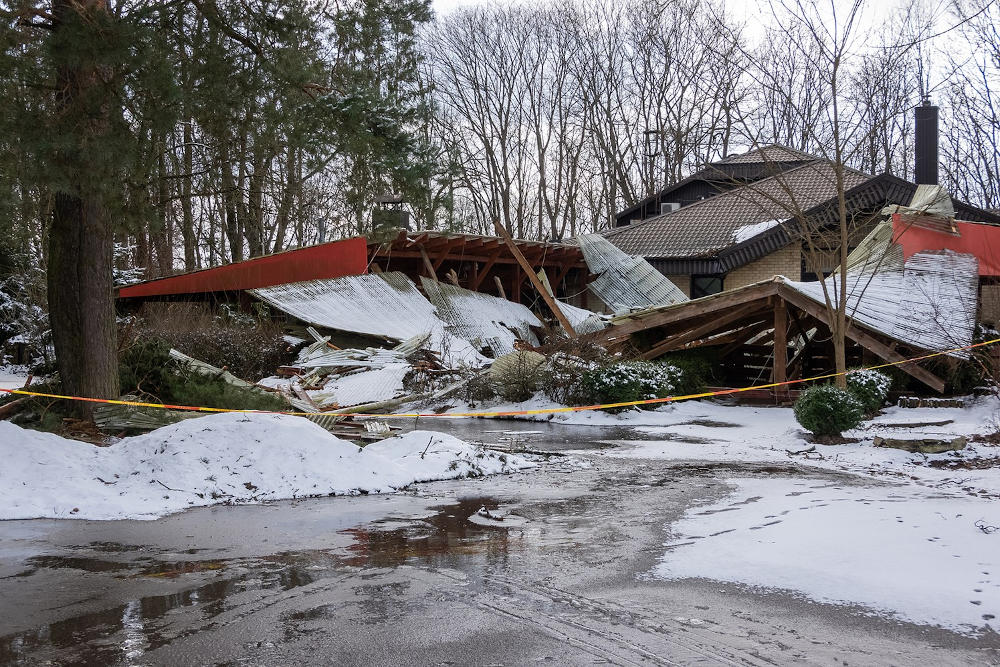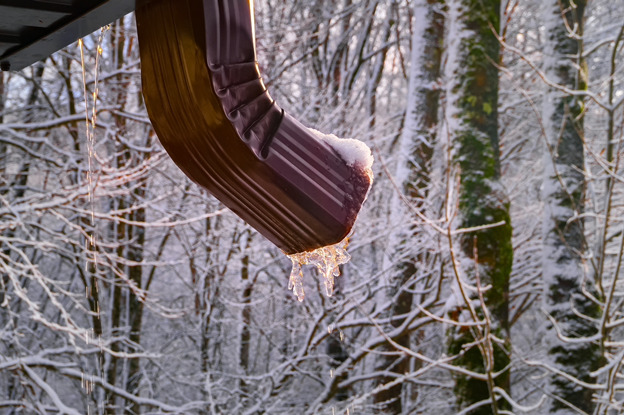
Your home is a huge investment worth protecting. Preventing property damage from winter weather should be a priority for homeowners. Rain, snow, ice, wind, freezing, flooding, fire – Mother Nature has many ways to cause problems. While you can’t control the weather, you can control how prepared your property is to safely weather the storm.
Cost of winter weather property damage
According to the Insurance Information Institute, 2021 winter storm damage caused over $1 billion dollars in insured property losses. This does not include uninsured property damage liability. It is important to read your homeowner’s insurance policy and understand what it does and does not cover if your property is damaged by weather. You may be surprised to see that it may not cover things like losses from landslides or erosion.
Property damage isn’t limited to physical damage to your home structure. Unfortunately, trees, plants, and other parts of your yard are often casualties. The ice storm of February 2021 alone caused the most tree damage of any storm event in the past 30 years!
Steps for preventing winter weather property damage
The good news is that your home and your yard don’t have to be casualties of winter weather. While you can’t stop hazardous weather from happening, you can prevent winter weather property damage with a little preparation:

- Keep walkways and pathways clear. This goes for your driveway, sidewalk, and any areas of entry or exit around your home. Keep these free of any obstructions.
- Clean your gutters and downspouts. Make sure your gutters and downspouts are free from leaves and other debris so that water can easily flow off your roof and away from your house.
- Keep storm drains clear. During heavy rains, flooding can happen fast when water cannot properly drain from roadways. Keep an eye on this if you have a drain in front of your home.
- Don’t let snow and ice build up. Property damage is more likely to occur when snow and ice build up, not just from water but from weight. De-icer, a snow shovel or snow blower, and a roof snow rake to help with rooftop snow removal can all come in handy.
- Assess drainage and water pooling. Proper drainage is key to preventing flooding and water damage to your home. Sunken areas around your foundation or in your yard are high-risk for water accumulation. Drainage solutions like rain gardens or permeable pavers are not only effective, but can also add value to your property.
- Check for areas of erosion. Heavy rains can cause soil to wash away, increasing risk of flooding, landslides, and muddy messes. Installing retaining walls, culverts, or other landscaping features to aid with drainage can help prevent erosion.
- Trim and prune your trees. Remove dead, low-hanging, bowing, and damaged tree branches. Added weight from snow and ice is a recipe for broken branches and property damage. Cut back overgrown trees and plants that are too close to the house. Be sure to also check for high-risk branches overhanging your roof. Having a professional assess and prune your trees and plants is a worthwhile investment.
- Check for tree growth near power lines. NEVER remove these branches yourself. Contact your local power company about tree limbs that need to be pruned near power lines. Homeowners are generally responsible for trees growing near and around power lines. Power companies are responsible for trees touching or causing downed power lines. Removal of branches near power lines should be done by a tree trimming professional. The power company may shut off the power to the lines temporarily so pruning can be done safely.
- Winterize any outdoor spigots and irrigation elements. If indoor pipes are at risk of freezing, so are outdoor pipes. Make sure sprinkler lines and outdoor spigots are properly winterized.
- Secure anything at risk of becoming a projectile in high winds. This includes loose shingles, siding, fencing, lighting, and objects like lawn decorations, furniture, or swing sets. If you can’t nail it down or secure it into the ground, have a plan to store it when hazardous weather strikes.
Resources for dealing with weather-related property damage
In Washington:
- Severe Weather and Natural Disasters Information – Washington State Department of Health
- Storm Assistance Information – Access Washington
In Oregon:
National:
- Settling Insurance Claims after a Disaster – Insurance Information Institute
- Severe Weather Preparedness
Your home is a huge investment worth protecting. Keeping up on property maintenance is key to safeguarding your property against damage from hazardous weather.
For help with landscape and tree maintenance, property maintenance, residential or commercial cleanup, irrigation, erosion control and drainage solutions, contact us today!

